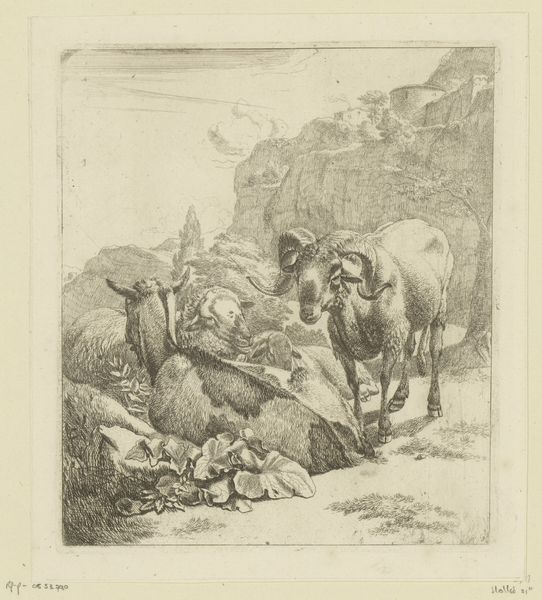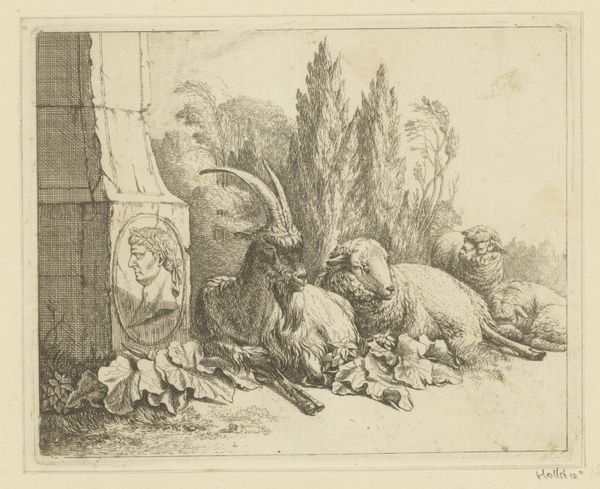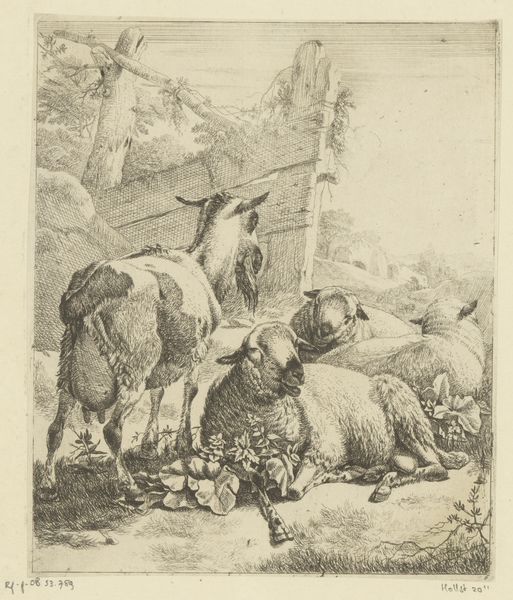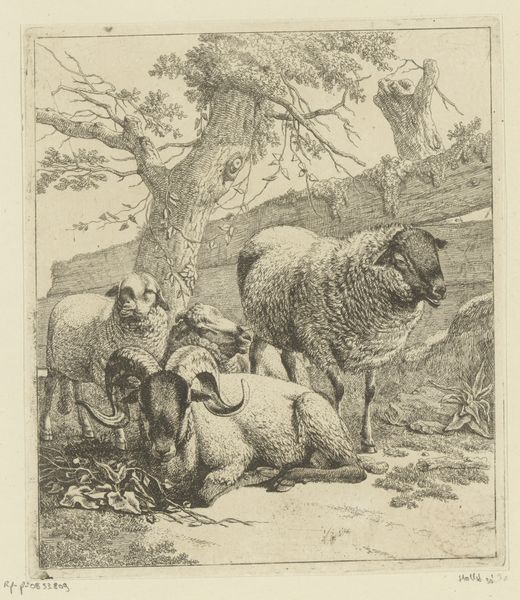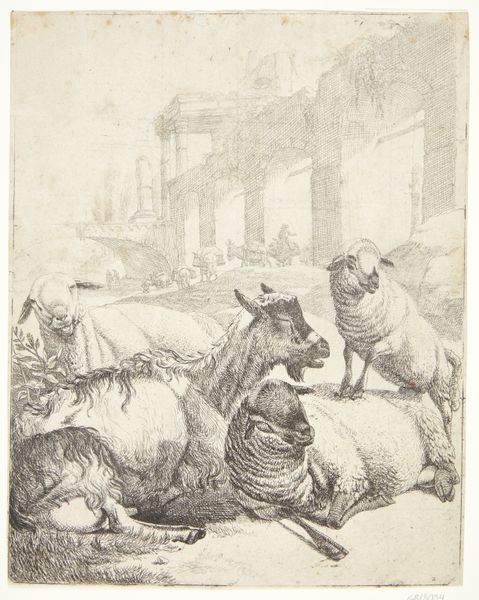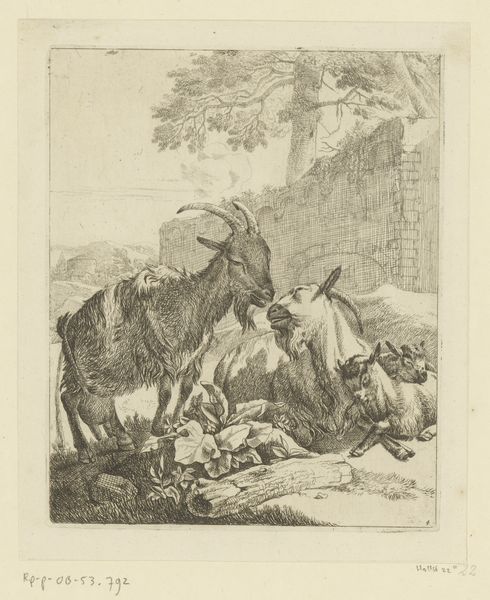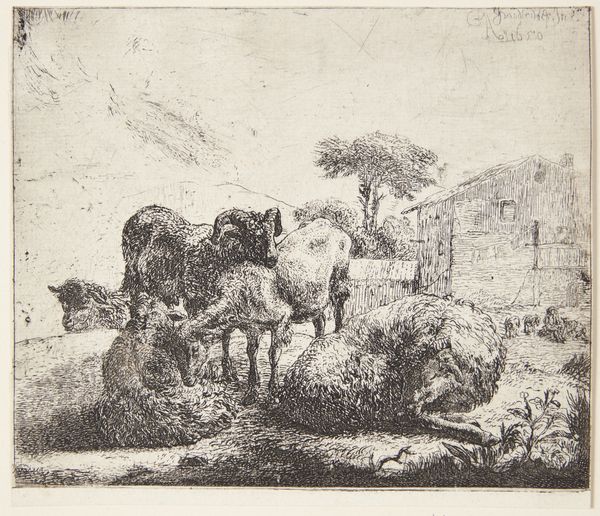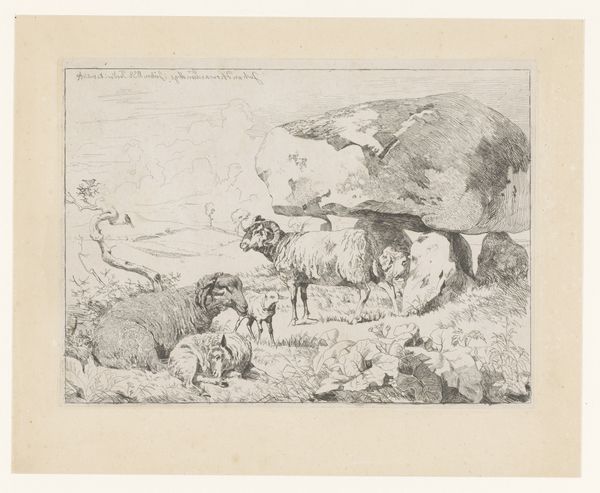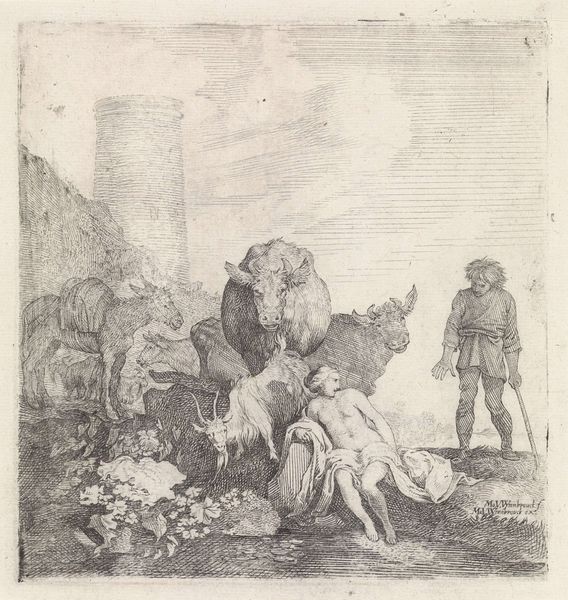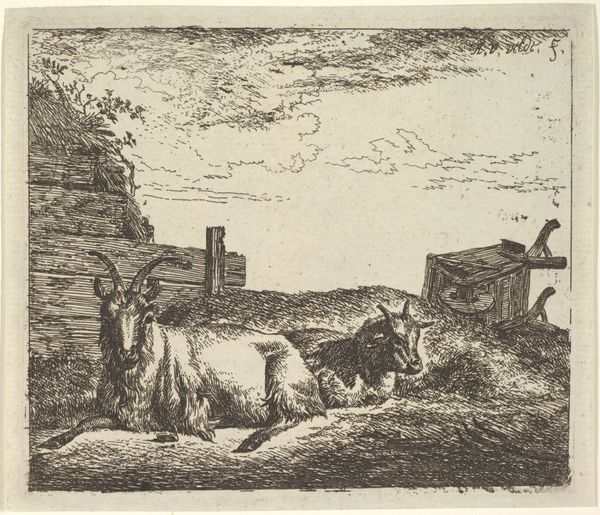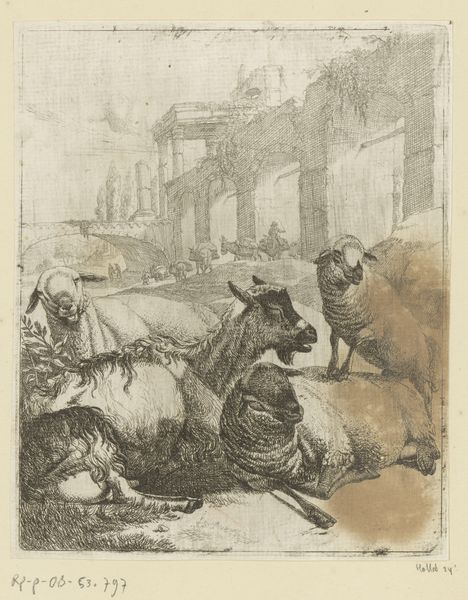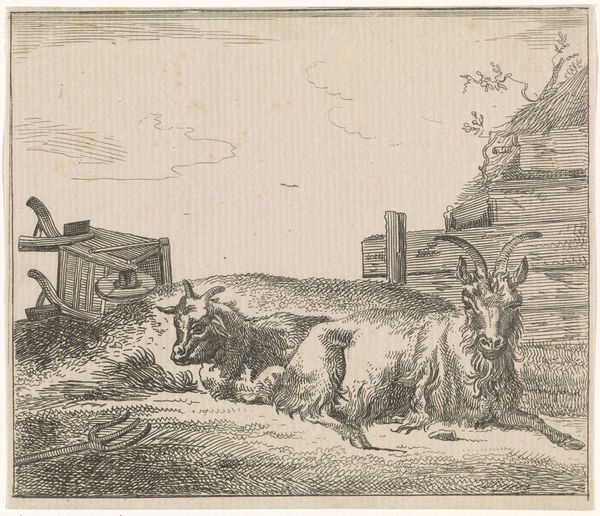
print, etching
#
baroque
#
animal
# print
#
etching
#
landscape
Dimensions: height 195 mm, width 160 mm
Copyright: Rijks Museum: Open Domain
Johann Heinrich Roos made this etching, Vier liggende en een staand schaap, using metal and acid in the 17th century. The print presents us with a bucolic scene of sheep in a field. But let’s consider the labor involved in the production of an etching like this. First, the artist would have had to prepare the metal plate, then carefully draw the composition using a needle-like tool, exposing the metal. Next, acid is applied to ‘bite’ into the exposed lines, creating grooves that will hold ink. The plate is then inked, wiped clean, and pressed onto paper, transferring the image. The precise control needed speaks to the skill Roos possessed. Roos was celebrated for his animal paintings, and there was a booming market for such pastoral scenes among wealthy city dwellers. Understanding the labor and skill involved in the etching process gives us a deeper appreciation for Roos’s work, and its place in a wider economic picture.
Comments
No comments
Be the first to comment and join the conversation on the ultimate creative platform.
